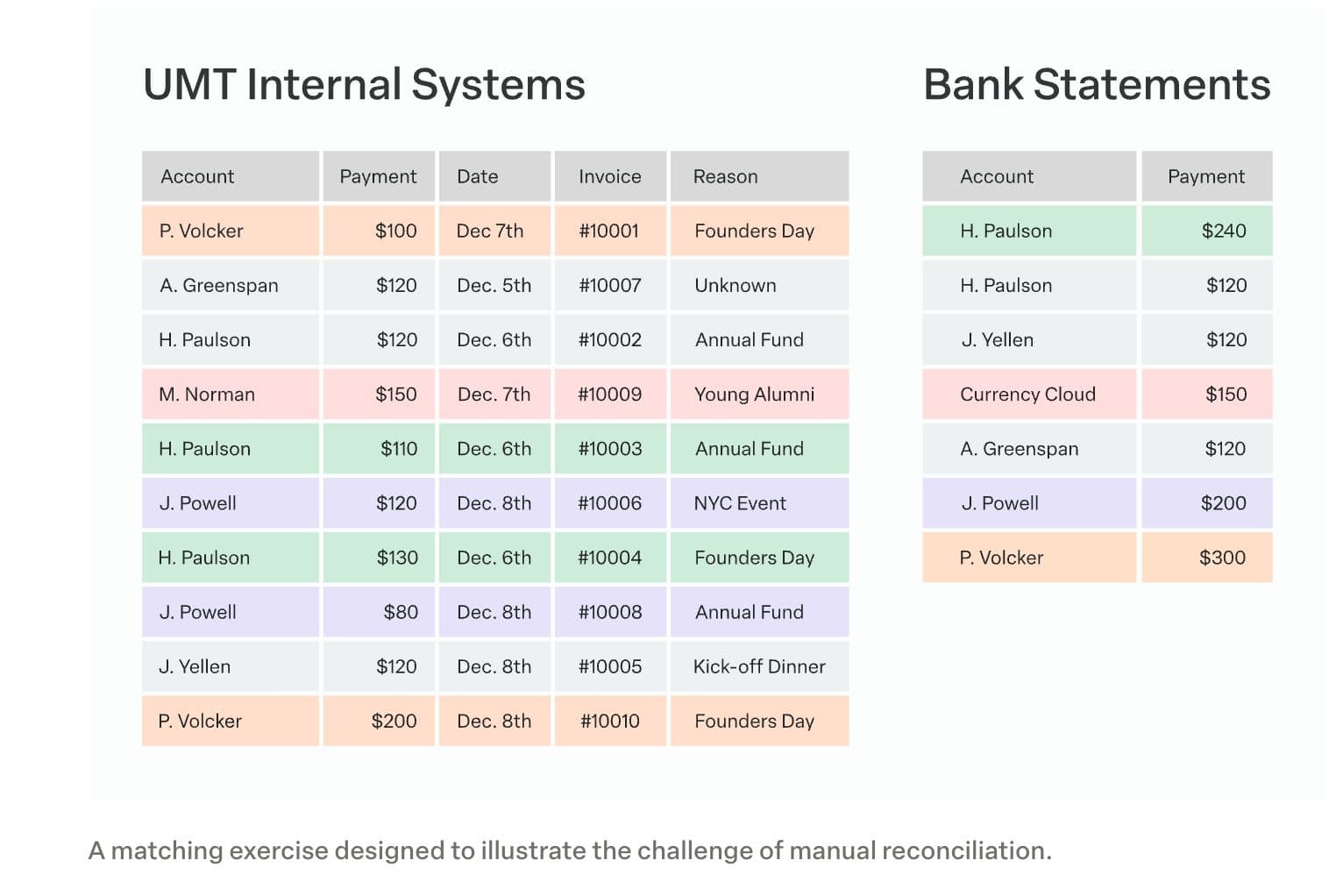Modern Treasury and Paxos Make It Easier for Businesses to Move Money with Stablecoins.Learn more →
What are the 4 steps in bank reconciliation?
The four steps in bank reconciliation are (1) accessing and comparing deposits between a company’s bank statement and its internal systems of record, (2) normalizing the bank statement as needed, (3) formatting of data from internal systems of record, and (4) comparing the bank statement and internal records to confirm a match.
As an example, suppose the accounting department at the University of Modern Treasury (UMT) is performing bank reconciliation for alumni donations. They would work across an internal record and a bank statement, as shown below, to compare, adjust, and ensure parity between the two records. This can be challenging to do, especially given time lapses in bank payment processing and the way in which banks process and report transactions.

Learn more
Bank reconciliation is the process of verifying the completeness of a transaction through matching a company’s balance sheet to their bank statement.
Read more
The main purpose of bank reconciliation is to ensure that a company’s finances are correctly documented.
Yes, bank reconciliation can be difficult, especially at scale. Primary difficulties stem from bank payment delays, the challenge of normalizing payments and bank data, and the need to match a high volume of transactions quickly.
To practice bank reconciliation, businesses may rely on manual processes, automating software, or some combination of the two. Regardless of process, bank reconciliation will always involved these four steps.
If bank reconciliation doesn’t balance, an error of some kind is indicated—be it a numerical mistake, oversight, or duplication, a human error in comparison or adjustment, or a software problem.
Read more
The three golden rules of accounting are (1) debit all expenses and losses, credit all incomes and gains, (2) debit the receiver, credit the giver, and (3) debit what comes in, credit what goes out.